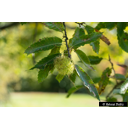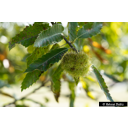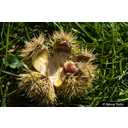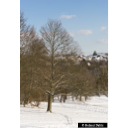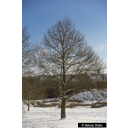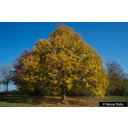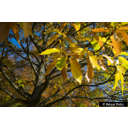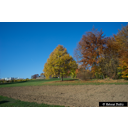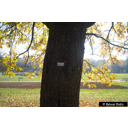Useful information about the taxon (species, subspecies, variety...)
Castanea sativa Mill. 1768
Fagaceae
(APG IV)Sweet chestnut, Spanish chestnut
Taxon concept: The Plant List (2014), version 1.1
Distribution: Europe: Apennine Peninsula, Austria, eastern Central Europe, Balkan Peninsula; Turkey, Caucasus, northern Iran, Northwest Africa; naturalised on the British Isles, Scandinavia, Denmark, Belgium, Germany, France and Benelux as well as Eastern Europe; North America
Castanea sativa Mill. - Accepted: Castanea sativa Mill. bei Zander 2008; Familie: Fagaceae (Zander 2008)Castanea sativa Mill. - Accepted: Castanea sativa Mill. bei The Plant List (2010); Familie: Fagaceae (APG III)Castanea sativa Mill. - Accepted: Castanea sativa Mill. bei The Plant List (2014), version 1.1; Familie: Fagaceae (APG III)Castanea sativa Mill. - Accepted: Castanea sativa Mill. bei The Plant List (2010); Familie: Fagaceae (APG IV)Castanea sativa Mill. - Accepted: Castanea sativa Mill. bei BfN Checklist Flora DE; Familie: Fagaceae (APG IV)Castanea sativa Mill. - Accepted: Castanea sativa Mill. bei World Flora Online - APG IV (Angiosperms); Familie: Fagaceae (World Flora Online - APG IV (Angiosperms))
- Flowers
- monoecious flowers in catkins
- Flower ecology
- wind-pollinated (anemophilous) and insect-pollinated (entomophilous)
- Life form
- woody, tree
- Foliage persistence
- deciduous
- Fruits
- female flowers develop into spiny cupules containing 3-7 brownish nuts
- Fruit ecology
- barochorous and zoochorous (squirrels and other animals)
- Soil conditions
- on moderately dry (to perculating fresh), moderately alkaline, lime-deficient, loose, acidic, moder to humus-rich, sandy stone and loam soil (oligotrophic brown soils)
- Light conditions
- (full sun), partial-shade plant
- Root type
- deep-rooted and wide spreading
- Natural occurrence (habitat)
- Mediterranean habitats, mesophilic deciduous forests, forest edges, gras-rich bottomland oak forests, hedgerows, scrub
- Vegetation typ and synecology (plant community)
- temperate, mixed mesophytic deciduous forests to warm-temperate forests, woodlands and scrub
- Usage
- edible nuts; tannins in leaves and bark are astringent and can be used in the treatment of bleeding, diarrhoea, etc.
Bundesamt für Naturschutz (BfN) (1999-2001 and ongoing): Floraweb - Daten und Informationen zu Wildpflanzen und zur Vegetation Deutschlands. www.floraweb.de.; Erhardt, W., Götz, E., Bödeker, N. & Seybold, S. (2008): Der große Zander. Enzyklopädie der Pflanzennamen. Band 2. Arten und Sorten. Eugen Ulmer KG, Stuttgart (Hohenheim), 18. Aufl., 2103 S.; Haider, M. et al. (2005): Wildbienenkataster. See: https://www.wildbienen-kataster.de; Maurizio, Anna et al. (1982): Nektar und Pollen - die wichtigsten Nahrungsquellen der Honigbiene. 4. Ehrenwirth, München, 3, überabeitete Auflage; Ministerium für Ernährung, Landwirtschaft, Umwelt und Forsten, Baden-Württemberg (Hrsg.) (1985): Pflanzenkatalog zur Verbesserung der Bienenweide und des Artenreichtums (Kurztitel: Bienenweidekatalog); Pritsch, Günter et al. (1985): Bienenweide.. Neumann-Neudamm, Melsungen; Pritsch, Günter et al. (2007): 200 Trachtpflanzen erkennen und bewerten.. Kosmos, Stuttgart; Schick, B. & Spürgin, A. (1997): Die Bienenweide. Eugen Ulmer Verlag, Stuttgart, Auflage: 4., völlig neubearb. u. erw. A., 216 S. 978-3800174188.; The International Plant Names Index (2009). Published on the Internet http://www.ipni.org; Courtesy to IPNI, 2009. Exported from IPNI at date: 2009-09-22 20:17:51; Werle, Susanne et al. (2015): ITS2 DNA metabarcoding of wild bee pollen loads, collected in 2020 and 2021 across all three exploratories. See: https://www.bexis.uni-jena.de/ddm/data/Showdata/31545?version=6; Westrich, P. et al. (2018): Die Wildbienen Deutschlands.. Ulmer Verlag ISBN 978-8186-0123-2.;
Diese Webseite verwendet Google Maps, um Karten und Standorte von Pflanzen in den Hohenheimer Gärten anzuzeigen. Dadurch werden unter Umständen Daten an Google weitergeleitet, was mit einer Verarbeitung Ihrer personenbezogenen Daten verbunden sein kann. Die Datenschutzerklärung von Google finden Sie hier: Datenschutzerklärung von Google
| Sex | Standort | Accession number | Planting year | Donation | IPEN | Lat. | Long. |
|---|---|---|---|---|---|---|---|
| Parzelle U | LG-U-020-21041 | 1998 | + | XX-0-HOH-LG-U-020-21041 | 48,7061627174 | 9,2132205943 | |
| Parzelle L | SP-LB-035-23487 | 2021 | + | XX-0-HOH-SP-LB-035-23487 | 48,71076898 | 9,21573893 | |
| Parzelle N | SP-NB-081-2963 | 1999 | XX-0-HOH-SP-NB-081-2963 | 48,711551296 | 9,2165319932 | ||
| Vegetationsgeschichte | VG-16396 | XX-0-HOH-VG-16396 | 48,70896 | 9,21509 |

